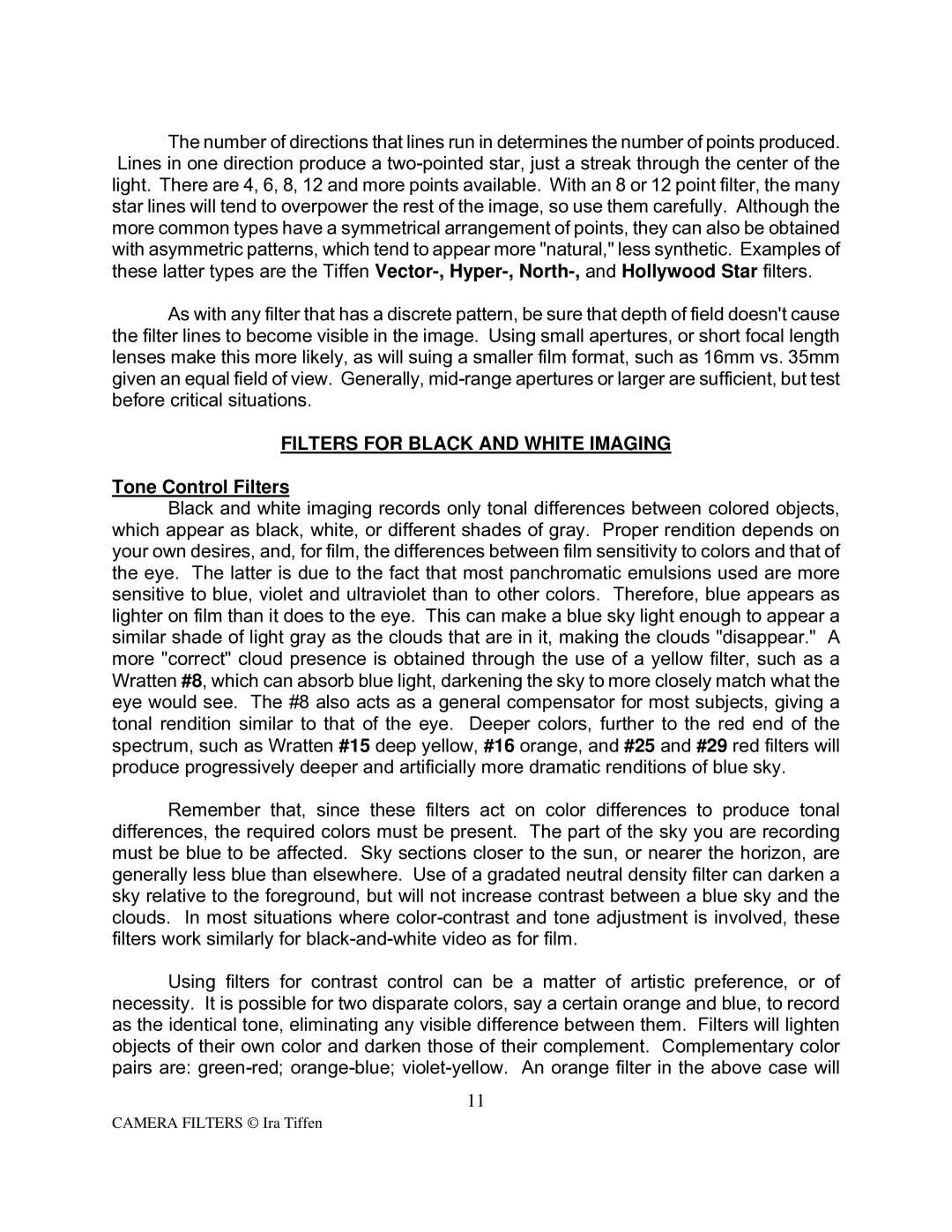The number of directions that lines run in determines the number of points produced. Lines in one direction produce a
As with any filter that has a discrete pattern, be sure that depth of field doesn't cause the filter lines to become visible in the image. Using small apertures, or short focal length lenses make this more likely, as will suing a smaller film format, such as 16mm vs. 35mm given an equal field of view. Generally,
FILTERS FOR BLACK AND WHITE IMAGING
Tone Control Filters
Black and white imaging records only tonal differences between colored objects, which appear as black, white, or different shades of gray. Proper rendition depends on your own desires, and, for film, the differences between film sensitivity to colors and that of the eye. The latter is due to the fact that most panchromatic emulsions used are more sensitive to blue, violet and ultraviolet than to other colors. Therefore, blue appears as lighter on film than it does to the eye. This can make a blue sky light enough to appear a similar shade of light gray as the clouds that are in it, making the clouds "disappear." A more "correct" cloud presence is obtained through the use of a yellow filter, such as a Wratten #8, which can absorb blue light, darkening the sky to more closely match what the eye would see. The #8 also acts as a general compensator for most subjects, giving a tonal rendition similar to that of the eye. Deeper colors, further to the red end of the spectrum, such as Wratten #15 deep yellow, #16 orange, and #25 and #29 red filters will produce progressively deeper and artificially more dramatic renditions of blue sky.
Remember that, since these filters act on color differences to produce tonal differences, the required colors must be present. The part of the sky you are recording must be blue to be affected. Sky sections closer to the sun, or nearer the horizon, are generally less blue than elsewhere. Use of a gradated neutral density filter can darken a sky relative to the foreground, but will not increase contrast between a blue sky and the clouds. In most situations where
Using filters for contrast control can be a matter of artistic preference, or of necessity. It is possible for two disparate colors, say a certain orange and blue, to record as the identical tone, eliminating any visible difference between them. Filters will lighten objects of their own color and darken those of their complement. Complementary color pairs are:
11
